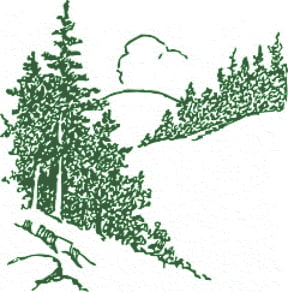“The coldest winter I ever spent was a
summer in San Francisco”
~ often credited to Mark Twain

Saturday afternoon found us in Humboldt County, northern California dropping our son off for his senior (and final!) year at Humboldt State University. While mixing the business of back-to-school with pleasure, we discovered Fern Canyon located up the coast from the university and north of the little town Trinidad. There a light mist fell, filtering the late afternoon sun as we followed a stream making its way to the sea. Redwoods, ferns and wild berries landscaped the grotto. Considered a high latitude rain forest, the weather varies little from one season to the next – cool temperatures, fog and lots of rain are common.
With our son now settled into his new home, a not-quite-Craftsman house, it was time for us to head back home.
The weather followed us. As we crossed the Golden Gate Bridge (what bridge?), drifting fog blanketed our view. There was even a brief rain shower. The above quote, though maybe not Mark Twain’s words, were nevertheless quite apropos.
After one chilly night in the Bay Area we continued into the Central Valley. There we were blasted by temperatures reaching 100 degrees. Considering the area produces half of the vegetables and fruits in the nation, I will refrain from commenting any further.
After a long (long!) drive, we were more than happy to reach the moderate temperatures of our own “little valley.”
So why was it 60 degrees in Humboldt, 100 in the Central Valley and 80 here at home? Climatologists generally agree the influence of the ocean is the main contributing factor. Cold Pacific Ocean waters of the California Current, plus latitude and geography, all come into play to create California’s diverse weather patterns.
The California current originates in the Arctic region and flows down the coasts of Canada, Washington, Oregon and California. In Baja it moves west (reason for warmer waters). Inland, parallel to the current are the coastal mountain ranges. Cool ocean air normally stays within the western slope. Further inland from the coast, especially on the eastern slope, the ocean’s influence diminishes rapidly. A drive during the summer from Malibu through the canyon into the San Fernando Valley is a perfect example.
We live in a zone of variability due to the constant battle of the onshore and offshore winds. Cool breezes from the ocean or heated air off the desert?
On the other hand, Humboldt County is located at a much higher latitude and is without a desert. This answers the question concerning the extremes in temperatures and other weather conditions during our trip.
Enjoying the cooler (than normal) August weather? Thanks to the persistent marine layer similar conditions remain in place. At the end of the week, the 90 degree temperatures will again be replaced by below average ones come Sunday. Nights continue to stay in the low 60s.
Perfect summer weather!
Sue Kilpatrick is a Crescenta Valley
resident and Official Skywarn Spotter for the National Weather Service.
Reach her at suelkilpatrick@gmail.com.
